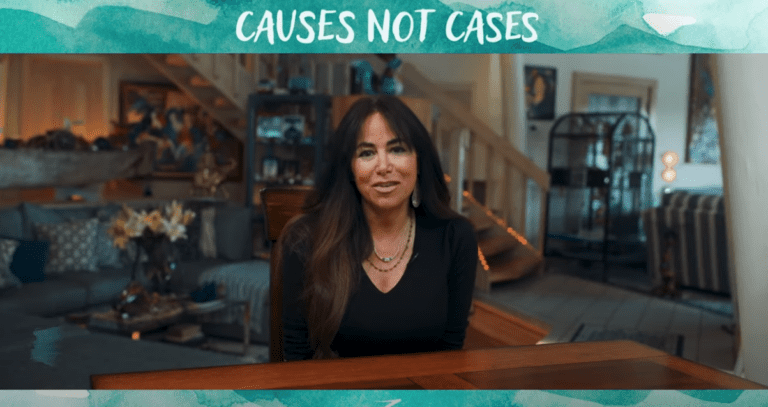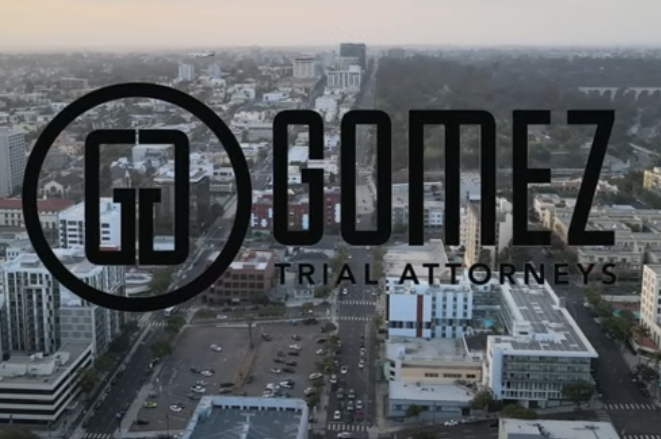Each day in California and beyond, people get hurt or killed in car accidents. In fact, more than 3,600 people died in California traffic accidents in 2016, a 7 percent increase in fatalities from car accidents over the year before, as reported by the Office of Traffic Safety. In 2016, the nation saw 34,748 fatal car accidents and more than 2 million injury accidents, the Insurance Information Institute noted.
For example, a Merced County Fire Department captain was one of two people killed in a car accident near the Gustine Airport. The accident occurred when a Dodge Ram pickup traveling west on Highway 140 attempted to pass a car in a passing zone on the two-lane road marked by a broken yellow line.
While passing, the pickup struck an eastbound Ford Ranger driven by the fire captain head on. The pickup truck overturned and ended up south of the roadway, while the Ranger spun out, stopping in the westbound lane, where it caught on fire. Both drivers were pronounced dead at the scene. The occupants of a third vehicle—the one that was being passed by the pickup—suffered minor injuries as they, too, were involved in the accident.
While there are many different causes of car crashes, some causes are more common than others. Here is a look at six of them from experienced auto injury attorneys.
[lwptoc]
1. Alcohol or Drug Impaired Driving
The Office of Traffic Safety states that, in 2016, the number of fatalities from alcohol-related crashes in California was 1,059. Additionally, 15 percent of all drivers killed in motor vehicle crashes who were tested were positive for the use of legal or illegal drugs. In the U.S., a 2013 to 2014 study conducted by the National Highway Traffic Safety Administration (NHTSA) revealed that 20 percent of nighttime and weekend drivers tested positive for drugs. Each day, the Administration reports, 30 people die in the U.S. in crashes that involve an alcohol-impaired driver, with drunk driving being the reason for 10,000 deaths a year.
A lot of different substances can cause impairment, including alcohol, legal drugs, illegal drugs, prescription medications, and even over-the-counter medications. The ways that these substances impair a driver’s ability to safely operate a motor vehicle depend on the type of drug used. Some examples include:
- Alcohol and marijuana: Slow a driver’s reaction time, coordination, and ability to make good decisions
- Cocaine and methamphetamine: Cause a driver to become aggressive or reckless
- Some prescription drugs and over-the-counter medication, including common decongestants: may cause extreme drowsiness or dizziness while driving
Even one drink of alcohol can cause slight impairment. By the time one reaches the legal limit for driving, which is 0.08 percent, the following signs of impairment can be observed:
- Loss of concentration
- Loss of short term memory
- The inability to control speed
- Impaired perception
- Diminished ability to process information
- Reduced response to emergency driving situations
- Inability to properly track moving objects
- Difficulty steering
- A decline in the ability to perform multiple tasks at once
2. Speeding
According to the NHTSA, speeding was a factor in more than a quarter of all fatal traffic crashes in the United States in 2017, making it a major cause of accidents. For young male drivers, ages 15 to 20-years-old, 31 percent of all fatal traffic crashes involve speeding. Speeding not only involves driving over the posted speed limit, but also driving too fast for the conditions of the road. Conditions that can increase the danger of speeding include traffic congestion, gravel roads or roadways that are in poor repair, and inclement weather.
Speeding poses many risks, including:
- A greater potential for losing control of the vehicle
- More distance required to safely stop the vehicle to avoid a collision
- Less time to see and react to dangers in the roadway
- Less ability for others to gauge how fast you’re going
- Loss of effectiveness of your vehicle’s safety features, including seat belts and airbags
- Increased crash severity and a greater chance of fatalities if a crash takes place
Though speeding is considered a form of aggressive driving, many people speed due to simpler reasons, such as running late, a sense of anonymity within a car that may cause a driver to experience feelings of detachment, and a disregard for the law or the safety of others. Males of all ages are more likely to speed than females. Speeders tend to be repeat offenders. The NHTSA reports that 26 percent of drivers who were killed in speed-related crashes in the U.S. in 2017 had previous convictions for speeding. 26 percent did not have a valid driver’s license at the time of the crash, and 24 percent had a previously recorded driver’s license suspension or revocation. 18 percent had been involved in a previous crash.
3. Distracted Driving
Potential driver distractions abound both inside the vehicle and out. In 2017, 3,166 lives were lost due to fatal car crashes caused by distracted driving. There are three forms of driving distraction:
- Manual distractions: Anything that occupies the driver’s hands with something other than a steering wheel
- Visual distractions: Anything that draws the driver’s eyes from the road
- Cognitive distractions: Anything that draws the driver’s focus from the task of driving
It is not unusual for a driver to be distracted by something in two, or even all three, ways. For example, texting distracts drivers manually, visually, and cognitively, making it a particularly dangerous activity to partake in while driving. The NHTSA notes that it takes approximately five seconds to read or reply to a text. When traveling at a speed of 55 miles per hour, the texting driver will have traveled the distance of a football field without focusing on the road or the task of driving, and while holding a phone in their hands.
Besides texting, there are several other common driver distractions, including:
- Talking on the phone
- Other cell phone use, such as posting on social media or browsing the internet
- Eating or drinking
- Applying makeup
- Visiting with other passengers in the car
- Adjusting the vehicle controls or electronics such as GPS or the stereo
- Looking at billboards, people, or scenery outside of the car
4. Fatigue
The National Safety Council reports that half of adult drivers admit that they regularly get behind the wheel of a car while feeling drowsy. 40 percent say they have fallen asleep at the wheel at least once in their lives, with 20 percent saying that this has happened to them within the past year. In 2015, around 5,000 people died in accidents that involved drowsy driving.
Drowsy driving is dangerous for drivers for several reasons, including:
- Slowed reaction times, impaired concentration, and a lack of awareness of hazards all increase in relation to how tired the driver is.
- Going without sleep for more than 20 hours straight produces the same impacts on driving ability as that of having a blood alcohol content at the legal limit of 0.08 percent.
- Some drivers experience microsleeps, which are short, involuntary periods of inattention that can place anyone around them during that time at increased risk of being injured in an accident.
Signs of dangerous drowsiness while behind the wheel include:
- Frequent yawning
- Difficulty keeping your eyes open
- Nodding off and having trouble holding your head up
- Not being able to remember the last several miles you’ve driven
- Difficulty maintaining speed
- Drifting out of your lane of travel
- Missing turns or road signs
An estimated 328,000 crashes in the U.S. annually involve fatigued drivers, resulting in 71,000 injuries and more than 1,500 fatalities. Drowsiness impacts drivers of all ages, but young drivers are at particularly high risk for having an accident due to fatigue. Fatigue-related crashes resulting in injury or death produce a societal cost of around $109 billion each year, not including property damage.
5. Teen Drivers
According to the Centers for Disease Control and Prevention, traffic accidents are the leading cause of death for teens. In 2016, 2,433 teens lost their lives due to traffic accidents and nearly 293,000 teens were injured severely enough to require emergency department treatment. Teens aged 15 to 19 account for about 6.5 percent of the U.S. population, but they account for about 8.4 percent—$13.6 billion—of the total costs of motor vehicle injuries.
Teen drivers are three times more likely to have a fatal motor vehicle crash than drivers over the age of 20. Like many causes of accidents, the teens most likely to be involved in a fatal crash are males, aged 16 to 19. The highest risk a driver faces of having an accident is within the first year of licensure. Teens who are driving with other teens in the vehicle are at higher risk of having an accident, and that risk increases with each teen passenger present. While driver inexperience is a factor in most teen crashes, it becomes especially prevalent when the teen is driving at nighttime. Teens are less likely to wear their seat belts than any other driver demographic.
Some of the reasons for such a high crash rate among teenage drivers are:
- Driver inexperience, which leads to a larger number of critical decision errors
- Underestimating dangerous situations or not recognizing potential hazards
- A higher likelihood of speeding or allowing less space between their vehicle and the vehicle in front of them
- A greater impact of impairment when consuming alcohol or drugs than that found in older drivers at all levels of blood alcohol content
6. Aggressive Driving
A 2016 study from the AAA Foundation revealed that nearly 80 percent of drivers in the U.S. expressed significant anger, aggression, or road rage when behind the wheel in the past year. Aggressive driving is the term given to a series of driving behaviors that are committed out of annoyance or with disregard for the safety of others. Speeding is perhaps the most common form of aggressive driving. Other forms include:
- Tailgating
- Running red lights
- Weaving in and out of traffic lanes
- Changing lanes without signaling
- Failing to yield right of way
Aggressive driving is often used interchangeably with road rage. While both behaviors share common characteristics, aggressive driving refers to actions that are traffic infractions. Road rage, on the other hand, refers to behaviors in which the driver’s vehicle becomes a weapon used to punish or even harm other drivers. Some of the road rage behaviors that were studied by the AAA Foundation are listed below, along with the estimated number of drivers who have exhibited that particular behavior in the last year:
- Purposefully tailgating, 51 percent, or 104 million drivers
- Yelling at another driver, 47 percent, or 95 million drivers
- Honking to show annoyance or anger, 45 percent, or 91 million drivers
- Making angry or obscene gestures, 33 percent, or 67 million drivers
- Trying to block another vehicle from changing lanes, 24 percent, or 49 million drivers
- Cutting off another vehicle on purpose, 12 percent, or 24 million drivers
- Getting out of the vehicle to confront another driver, 4 percent, or 7.6 million drivers
- Bumping or ramming another vehicle on purpose, 3 percent, or 5.7 million drivers
One road rage incident took a dangerous turn when a driver allegedly shot and wounded another. A witness said both drivers were “acting crazy” and driving recklessly before the afternoon incident occurred. The witnesses said the car that was shot at was riddled with bullet holes. The driver was able to get away from the shooter, despite suffering a gunshot wound to his knee. He crashed his car down the road from the incident, got out, and reportedly ran down the street. The victim, who was described as male and in his 20s or 30s, was treated at a local hospital for non-life threatening injuries.
The incident prompted area police to remind drivers that if they are confronted by an aggressive driver, do not engage that driver. Avoid eye contact, avoid retaliation, and try to get to a public parking lot where other people are around and the road raging driver is less likely to cause harm.
Were you injured in a car accident? A car accident attorney can provide answers to your legal questions.







